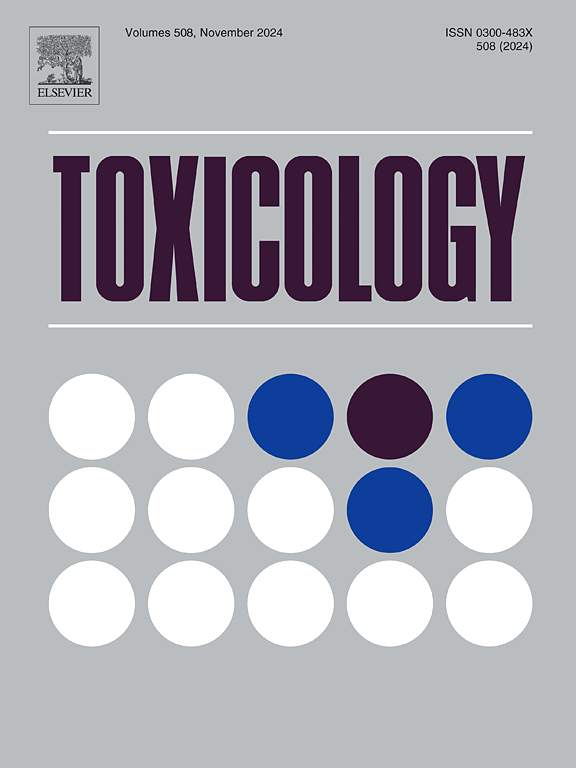Sintilimab combined with acetaminophen aggravates liver injury through apoptotic and disturbed bile acid pathways
IF 4.8
3区 医学
Q1 PHARMACOLOGY & PHARMACY
引用次数: 0
Abstract
Sintilimab, an immune checkpoint inhibitor, and acetaminophen (APAP), a common analgesic, have been implicated in hepatotoxicity. However, their combined effect on liver injury remains understudied. This study investigated the exacerbating hepatotoxic effects of sintilimab in combination with APAP in mice, focusing on the apoptotic markers and bile acids disruptions. We found that their combination significantly increased serum liver enzymes (aminotransferase and alanine aminotransferase), induced histological liver damage, and boosted hepatic oxidative stress markers (reactive oxygen species, 8-hydroxy-2’-deoxyguanosine, malondialdehyde) while depleting glutathione. Furthermore, the co-treatment also heightened apoptotic markers (cytochrome C, caspase-9, caspase-3, Bax) compared to the control and APAP group alone, indicating a more pronounced apoptotic response. Additionally, it downregulated CYP7A1 expression and disrupted bile acid metabolism, characterized by decreased levels of primary bile acids and increased levels of secondary bile acids, suggesting a role in the aggravated liver injury. This highlights the potential mechanism by which sintilimab and APAP interact, leading to increased oxidative stress, apoptosis and disruption of bile acid homeostasis, which together contribute to the exacerbation of liver injury. The study underscores the need for caution when co-administering sintilimab and APAP, emphasizing the importance of monitoring liver injury to mitigate the risk of combined drug use.
辛替单抗联合对乙酰氨基酚可通过细胞凋亡和胆汁酸紊乱途径加重肝损伤。
辛替单抗,一种免疫检查点抑制剂,和对乙酰氨基酚(APAP),一种常见的镇痛药,都与肝毒性有关。然而,它们对肝损伤的综合影响仍未得到充分研究。本研究研究了辛替单抗联合APAP对小鼠肝毒性的加重作用,重点研究了凋亡标志物和胆汁酸破坏。我们发现它们的组合显著增加血清肝酶(转氨酶和丙氨酸转氨酶),诱导组织学肝损伤,提高肝脏氧化应激标志物(活性氧,8-羟基-2'-脱氧鸟苷,丙二醛),同时消耗谷胱甘肽。此外,与对照组和单独使用APAP组相比,联合处理还增加了凋亡标志物(细胞色素C, caspase-9, caspase-3, Bax),表明更明显的凋亡反应。此外,它下调CYP7A1表达,破坏胆汁酸代谢,表现为原发性胆汁酸水平下降,次级胆汁酸水平升高,提示其在肝损伤加重中起作用。这突出了辛替单抗和APAP相互作用的潜在机制,导致氧化应激增加、细胞凋亡和胆汁酸稳态破坏,这些共同导致肝损伤加剧。该研究强调了在联合使用辛替单抗和APAP时需要谨慎,强调了监测肝损伤以减轻联合用药风险的重要性。
本文章由计算机程序翻译,如有差异,请以英文原文为准。
求助全文
约1分钟内获得全文
求助全文
来源期刊

Toxicology
医学-毒理学
CiteScore
7.80
自引率
4.40%
发文量
222
审稿时长
23 days
期刊介绍:
Toxicology is an international, peer-reviewed journal that publishes only the highest quality original scientific research and critical reviews describing hypothesis-based investigations into mechanisms of toxicity associated with exposures to xenobiotic chemicals, particularly as it relates to human health. In this respect "mechanisms" is defined on both the macro (e.g. physiological, biological, kinetic, species, sex, etc.) and molecular (genomic, transcriptomic, metabolic, etc.) scale. Emphasis is placed on findings that identify novel hazards and that can be extrapolated to exposures and mechanisms that are relevant to estimating human risk. Toxicology also publishes brief communications, personal commentaries and opinion articles, as well as concise expert reviews on contemporary topics. All research and review articles published in Toxicology are subject to rigorous peer review. Authors are asked to contact the Editor-in-Chief prior to submitting review articles or commentaries for consideration for publication in Toxicology.
 求助内容:
求助内容: 应助结果提醒方式:
应助结果提醒方式:


